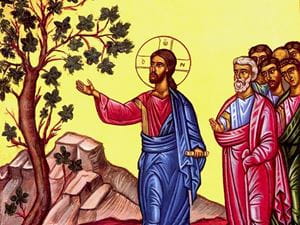
The Bible is filled with miracles. There are dozens and dozens of them in the Good Book. The very first line of the Bible contains one of the greatest miracles that is ever reported within its pages. “In the beginning God created the heavens and the earth.” From there, the miracles only continue. The entire first chapter of Genesis is nothing but a list of the miracles God performed as He was creating the universe.
The Old Testament is riddled with miracles, but the New Testament is no slouch when it comes to miracles either. The four gospels are packed with the incredible miracles that Jesus performed, and the Acts of the Apostles describe the incredible feats that the Apostles managed after Christ’s death and resurrection.
The sheer number of miracles in the Bible is doubtless meant to impress upon the reader the power that God wields. Unfortunately, that sheer number means that there are always a few miracles that readers fail to remember after they put down the Good Book. Here are six biblical miracles that are often forgotten.
Money From a Fish
Generally when someone says that God has a sense of humor, they are speaking of either unpleasant circumstances, a cruel coincidence or giving an insult. Matthew 17, however, proves that God in the form of Jesus certainly had a sense of humor and a bit of a bizarre one at that.
Matthew 17 reads much like any of the other chapters in Matthew or other gospel depictions of Jesus’ ministry. Jesus is traveling. He teaches the disciples something. He is stopped and asked to heal someone. People try to trick Jesus. All of this is familiar to anyone who has read another one of the gospels. What is not familiar is the miracle Jesus performs at the end of the chapter. Unlike many of His other miracles, this one comes completely out of left field. When He is asked to pay the temple tax, He tells Peter “go to the lake and throw out your line. Take the first fish you catch; open its mouth and you will find [the money for the temple tax.] Take it and give it to [the tax collectors] for my tax and yours.” Matthew managed to preserve this little gem, but unfortunately, he did not record how the tax collectors reacted to what may be Jesus’ strangest miracle.
Death to a Fig Tree
Most of Jesus’ miracles involved creation. His miracles healed diseases, saved people from demons and multiplied what little food He was given to feed those listening to Him. Mark 11, however, tells of an often forgotten miracle that was a miracle of destruction. In the beginning of Mark 11, Jesus finally makes His entrance into Jerusalem. He spends a bit of time visiting the city, then retires outside the city limits for the night. In the morning, Jesus and the disciples left for Jerusalem once more. As they were on their way, Jesus became hungry. “Seeing in the distance a fig tree in leaf, He went to find out if it had any fruit. When He reached it, He found nothing but leaves, because it was not the season for figs. Then He said to the tree, ‘May no one ever eat fruit from you again.’…The fig tree withered from the roots.” Mark does not make it entirely clear why Jesus felt the need to kill the fig tree, but he does record this odd miracle.
Floating Iron
2 Kings 6 begins with a miracle. In this story, the prophet Elisha is traveling with several other prophets when they decide to build a meeting place by the Jordan. Each person in the company went to the riverside and began to cut down a tree in order to get the lumber necessary to build their meeting place. “As one of [the prophets] was cutting down a tree, the iron axhead fell into the water. ‘Oh no, my lord!’ he cried out. ‘It was borrowed!’” The loss of a borrowed valuable was obviously not something anyone wanted. In response to the other prophet’s concern, “[Elisha] asked, ‘Where did it fall?’ When [the man who dropped the axhead] showed [Elisha] the place, Elisha cut a stick and threw it there, and made the iron float.” The man retrieved his axhead, and though the story does not say what happened after Elisha made iron float, the group of prophets presumably went on to finish building their meeting place.
Healing Serpent
As a general rule, nothing good is associated with the appearance of a serpent in the Bible. It is a snake that tempts Eve in Genesis, and snake bites are used repeatedly as a method of punishing disobedient or unbelieving people. Serpents are a sign of cruel cunning, trickery and malice. It is odd then, that Numbers 21 equates a snake with healing.
In Numbers 21, the Israelites were traveling with Moses from Mount Hor when they began complaining. In response, “the LORD sent venomous snakes among [the Israelites;] they bit the people and many Israelites died.” The Israelites repented and asked Moses to convince God to remove the snakes. God answered Moses’ prayer and told him, “Make a [bronze] snake and put it up on a pole; anyone who is bitten can look at it and live.” This miraculous healing is patently bizarre when compared against the rest of the Old Testament as it uses a combination of two of the most reviled symbols in the Old Testament, a snake and a metal animal, as a vehicle for God’s healing.
Peter Walks on Water
Nearly every Christian knows the story of how Jesus walked on water during a storm. Frankly, many non-Christians are at least passingly familiar with the story thanks to the phrase that one person who thinks another is perfect and can “walk on water.” What is often forgotten about that famous episode in the gospels is that Jesus is not the only one who stands atop the waves. In Matthew 14, Peter briefly walks on water as well. When Jesus walked across the lake to the disciples, they were convinced He was a ghost. When Jesus told them He was not a ghost, Peter called out “Lord, if it’s you…tell me to come to you on the water.” Jesus told Peter to come to Him, and “Peter got down out of the boat, walked on the water and came toward Jesus. But when he saw the wind, he was afraid and, beginning to sink, cried out, ‘Lord, save me!’ Immediately Jesus reached out His hand and caught him.” Peter may not have passed his water-walking exam with flying colors, but many people forget he managed it at all.
Zechariah Made Mute
The priest Zechariah was the father of John the Baptist. Like the fathers of many other important figures in the Bible, he was quite old when John was conceived. The Gospel of Luke tells the story of how Zechariah was surprised when an angel told him that he was going to be a father. “Zechariah asked the angel, ‘How can I be sure of this? I am an old man and my wife is well along in years.’” The angel’s answer was that Zechariah would be made mute as punishment for not believing the angel’s words, but he would be able to speak again once his son was born.
Zechariah’s sudden muteness baffled those who were waiting for him outside the temple. “They realized he had seen a vision in the temple, for he kept making signs to them but remained unable to speak.” The miracles of Zechariah’s muteness and John the Baptist’s birth are often forgotten as they come directly before the story of Jesus’ conception and birth in Luke.
The Bible is filled with stories about God’s miracles. As such, it is almost inevitable that some of them are forgotten when people think back over the Good Book. That said, there is no reason for people to not remind themselves that God’s miracles are not always as dramatic as the Flood or Feeding the 5,000. Sometimes they are small moments, such as a prophet helping another man recover something he lost. Such minor miracles can perhaps serve as a reminder that even the smallest things can have God’s hand in them and that all miracles should be appreciated as such, including the simple miracle of living.

